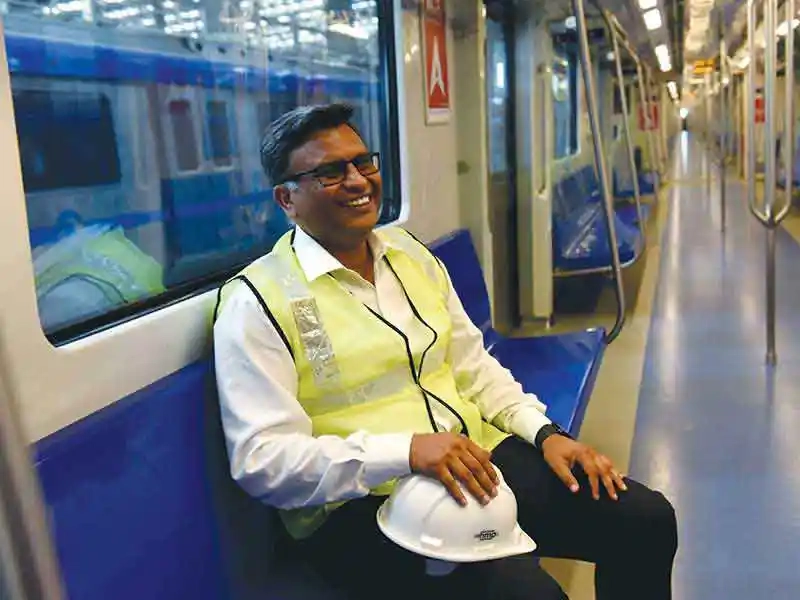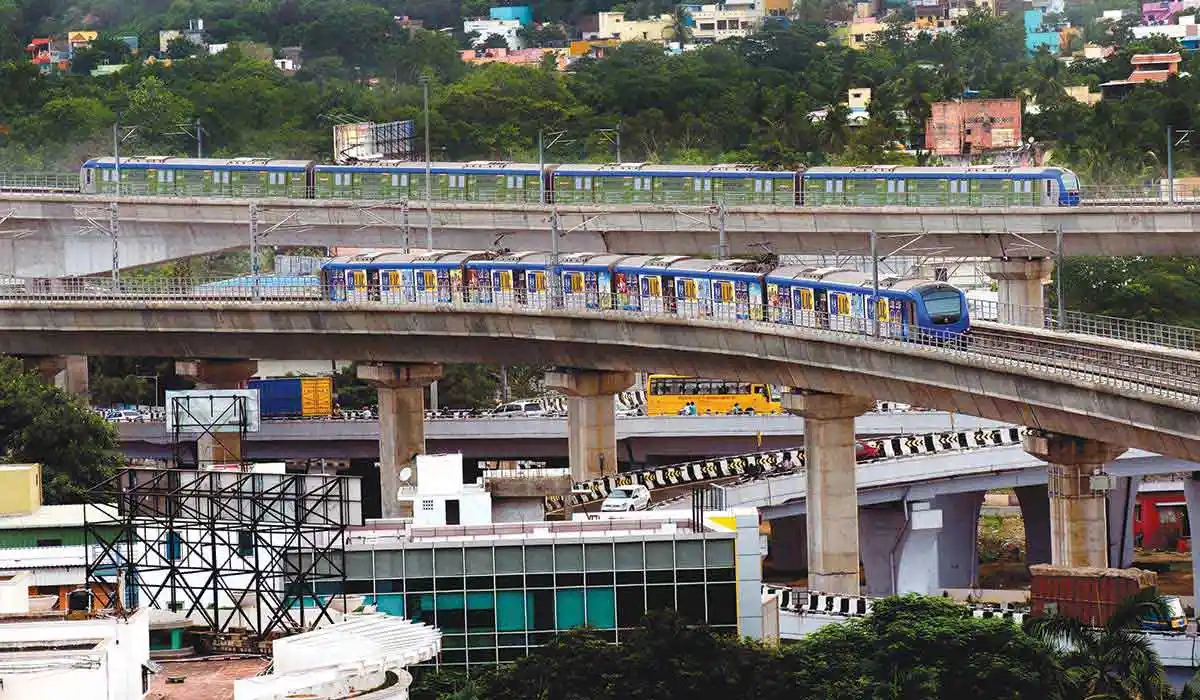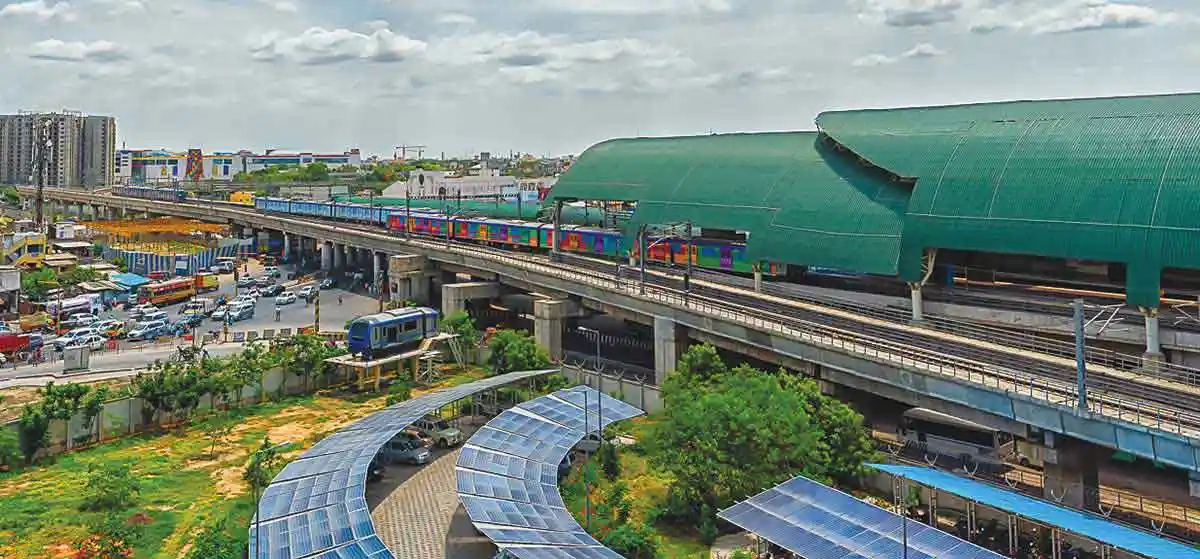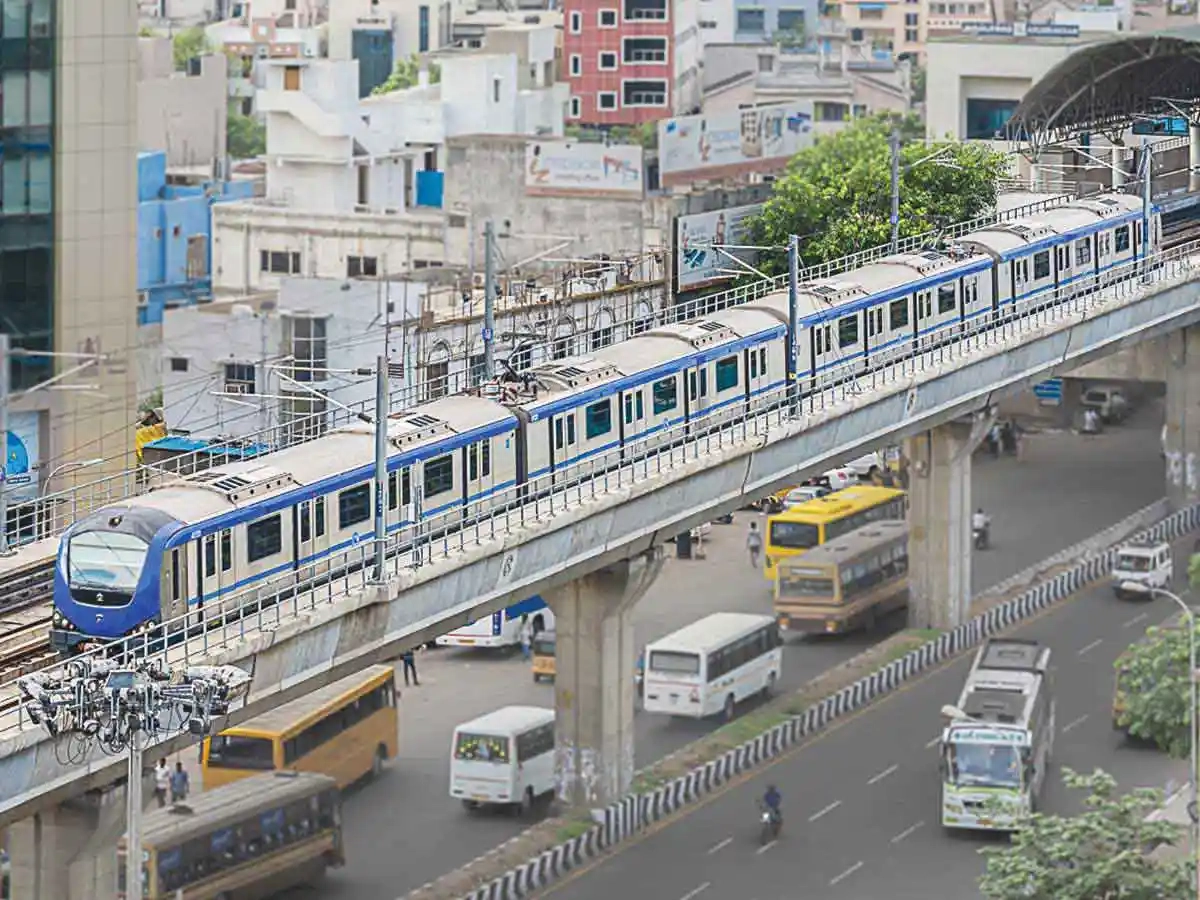CMRL: Unfazed by Challenges

What were the challenges faced in the construction of the 10-km stretch which is entirely underground?
Chennai Central Metro was envisioned as a unique underground metro station and achieving the objectives of inter-modal connectivity with close co-ordination with all the stakeholders was a challenge. It was a huge task to carry out such a massive project in the core part of the city. Working in an urban environment comes with its own set of constraints. In city junctions, land availability is a major constraint and executing the work within a small constricted area proved to be a challenge. There are many other hurdles to be tackled in terms of logistics, material storage within the limited space, movement of materials and equipment from other locations.
During the course of execution, the standard of living has increased considerably, so delivering a sophisticated and state-of-the-art Metro network becomes a key aspect of construction. Effective implementation was largely dependent on planning and adherence to timelines by all the stakeholders.
Stage-wise traffic diversion schemes were implemented to avoid complete closure of road sections near the work areas. Safe implementation of the underground works located in an area of high water table relied upon effective dewatering operations.

What underground / tunneling methodo- logies and technologies were used?
Bottom Up method and Top Down method have been followed with D’Wall (Diaphragm wall) construction for the underground section. Closed Face Earth Pressure Balancing (EPB) tunneling machines were used and additional control measures were taken in high risk and sensitive areas.
What are your initiatives and plans to integrate Chennai Metro with other public transport systems to ensure seamless travel and last mile connectivity?
Chennai Metro Rail Limited (CMRL) is advocating Multi-Modal Integration (MMI) to ensure better mobility for metro users and for people using other means of public transport. During the implementation of Phase-1, the integration concept was broadly considered and thus the Metro is connecting the city’s important bus/rail/air transport hubs - the Inter-city Bus Terminal – Koyambedu, Rail Terminal - Chennai Central and Egmore, and Air Terminal – Chennai Airport.
In order to provide seamless connectivity to Metro Rail commuters, CMRL is continuously co-ordinating with other stakeholders such as Greater Chennai Corporation (GCC), Metropolitan Transport Corporation (MTC), Highways Department, Chennai Metropolitan Development Authority (CMDA) w.r.t. various activities like provision of feeder bus services, better access roads to stations, development of footpaths on station access roads, installation of traffic information signage boards at stations’ vicinity area, relocation of city bus stops closer to stations, formation of missing links, construction of foot-over-bridges, etc.
In addition to this, CMRL is operating own feeder services for select metro stations through share auto/minicab. Further, a bicycle sharing system is made available for free and shared use to metro passengers on a short-term basis. CMRL is planning to operate a full-fledged app-based feeder services for all stations.

Is CMRL also considering the light Rail Transit or monorail system as feeder services?
In order to meet future traffic demand, the expansion of mass transit corridor is an imperative.The present stand-alone Metro system of 45 km by itself is not sufficient to address the traffic needs of Chennai. So, there is a case for considering expansion of Mass Transit options.
In this context, Chennai Metro Rail Limited is currently working on Metro Rail Phase-2 expansion. Multi-Modal Integration Strategy has also been built into the planning of CMRL Phase-2. The proposed Chennai Metro Rail Phase-2 will integrate with the existing sub-urban rail, MRTS, Phase-1 of Metro and City Bus Terminals at 21 different locations; the details of which are as follows:
| Type | Corridor 3 (Madhavaram – SIPCOT) | Corridor 4 (Light House- Poonamallee Bypass) |
Corridor 5 (Madhavaram – Sholinganallur) |
| Metro-Metro/MRTS | Madhavaram, KMC, Thirumayilai, Thiruvanmiyur Sholinganallur | Vadapalani, Nandanam, Thirumayilai | Madhavaram, CMBT, Alandur, St. Thomas Mount, Shollinganallur |
| Metro-Bus | Ayanavaram, Mandaiveli, Adyar | Poonamalle | Annanagar, Villivakkam, CMBT |
| Metro-Sub-urban Rail | Perambur, Chetpet | Kodambakkam | Villivakkam, St. Thomas Mount |
Please share some details of Phase-2 project of Chennai Metro Rail.
Phase-2 expansion of 118.9 km metro rail network with 128 stations, has three corridors i.e. Corridor-3 from Madhavaram to Sipcot (45.8 km); Corridor-4 from Lighthouse to Poonamalle Bypass (26.1 km); and Corridor-5 from Madhavaram to Sholinganallur (47 km). The estimated cost of the project is ₹69,180 crore. About 65% of the corridors in Phase-2 are elevated sections and the remaining are underground. The soil investigation and detailed design work are in progress. The project is scheduled to be completed by end of 2026.
The learnings from Phase-1 implementation has resulted in a detailed study on station size reduction. Compared to Phase-1 stations, the structures planned in Phase-2 will be optimized, more sleek and will require less land.
TBM tunnelling has proven to be a successful method and the same will be considered in Phase-2. Energy saving methods and green technology have been ingrained in the sustainable design and construction concepts implemented by CMRL and the same have been integrated in the design of Phase-2.
The construction activity for the priority corridor is likely to be started from April 2020. Presently, the design and geo-technical investigation works are being undertaken by CMRL through various agencies / consultants.

As a recipient of the prestigious Platinum Rating from the Indian Green Building Council (IGBC) for all the 32 Metro Stations of Phase-1, CMRL has entered the ‘green zone’. What green features will be incorporated in the Phase 2 project?
All the stations in Phase-2 will be designed as green buildings. Efforts will be made for providing solar power to the extent possible; water consumption will be substantially reduced as chiller plant technology in underground stations is being replaced by VRF technology, which will have nil water consumption. Impetus will be given for using non-fossil fuel in vehicles operated for last mile connectivity.
What are the critical issues and challenges in the development of metro rail system in India today?
Land acquisition and working with various stakeholders; working in congested urban environments while ensuring safety, are some of the critical challenges. Standardization and indigenization is the need of the hour.
NBM&CW August 2019



















